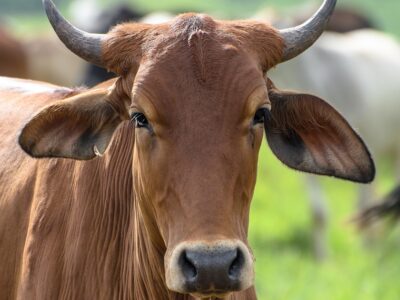Below you can find a complete list of Vietnamese animals. We currently track 296 animals in Vietnam and are adding more every day!
Vietnam belongs to the Indomalayan realm of biogeographic areas. It’s considered to be very high in biodiversity. The climate of Vietnam varies according to region. Vietnam has several regions such as plains, tropical forests, mountains, rivers, and beaches.
It is also affected by tropical storms and typhoons. Vietnam is ranked 16th in biodiversity compared to the rest of the world.
It is home to roughly 16% of all species in the world. Vietnam is home to about 260 species of reptiles, 120 species of amphibians, 840 species of birds, and 310 species of mammals.
Some examples of Vietnam’s animal species include:
- Crested argus
- Red-shanked douc
- Indochinese leopard
- Saola
- Water monitor
- Indian elephant
The Official National (state) Animal of Vietnam
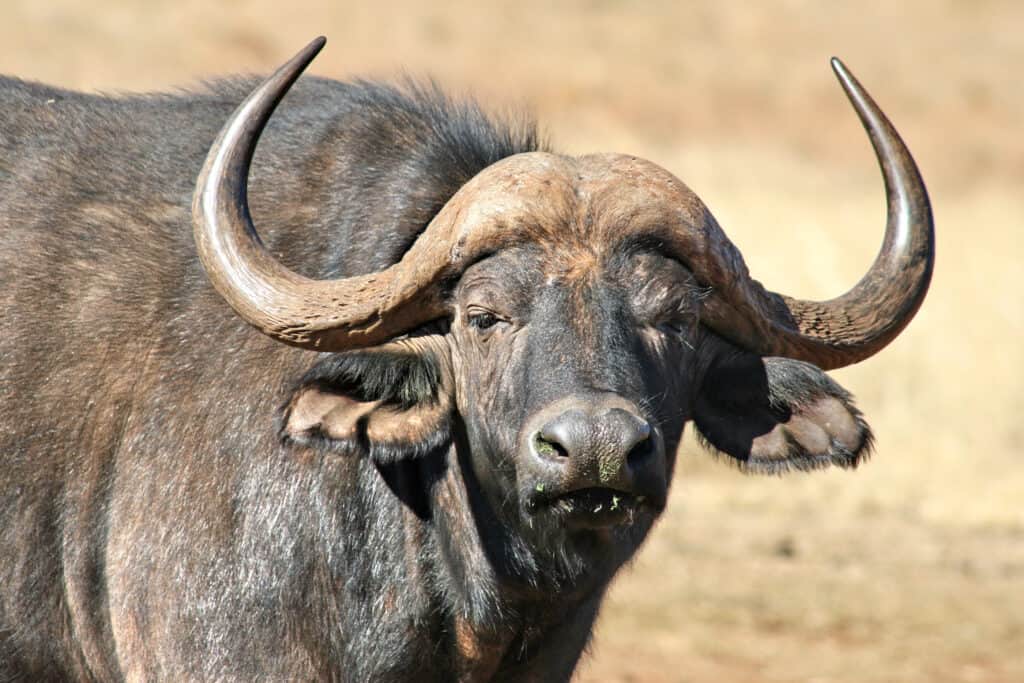
The official national animal of Vietnam is the water
buffalo
.
©Hannes Thirion/Shutterstock.com
The official national animal of Vietnam is the water buffalo. The water buffalo is very important to Vietnam’s culture and history.
Its docile and gentle demeanor allows it to be tamed easily, and it is widely used for farming and other work tasks. Water buffalos are so crucial to farmers in Vietnam that they are treated as a member of the family.
Water buffalos are considered endangered and are often hunted for their hide and horns. Natural predators of the water buffalo include tigers and crocodiles. They are herbivores and love spending time in the water. Aquatic vegetation makes up the majority of their diet.
Rarest Animals Found in Vietnam

The Saola, commonly referred to as the “Asian unicorn,” is an antelope-like species that can only be found in the Annamite Mountains on the boundary between Vietnam and Laos. It is a severely endangered species.
Vietnam is home to a diverse range of flora and fauna, including many unique and rare animal species.
Here are some of the rarest animals found in Vietnam:
- Saola – The Saola, also known as the “Asian unicorn,” is a critically endangered antelope-like species that is found only in the Annamite Mountains on the border between Vietnam and Laos.
- Giant ibis – The Giant ibis is a critically endangered bird species that are found only in Cambodia, Laos, and Vietnam. It is the largest ibis species in the world and is one of the rarest birds in Southeast Asia.
- Red-shanked douc – The Red-shanked douc is a critically endangered primate that is found only in the central highlands of Vietnam. It is known for its striking and colorful appearance.
Largest Animals Found in Vietnam
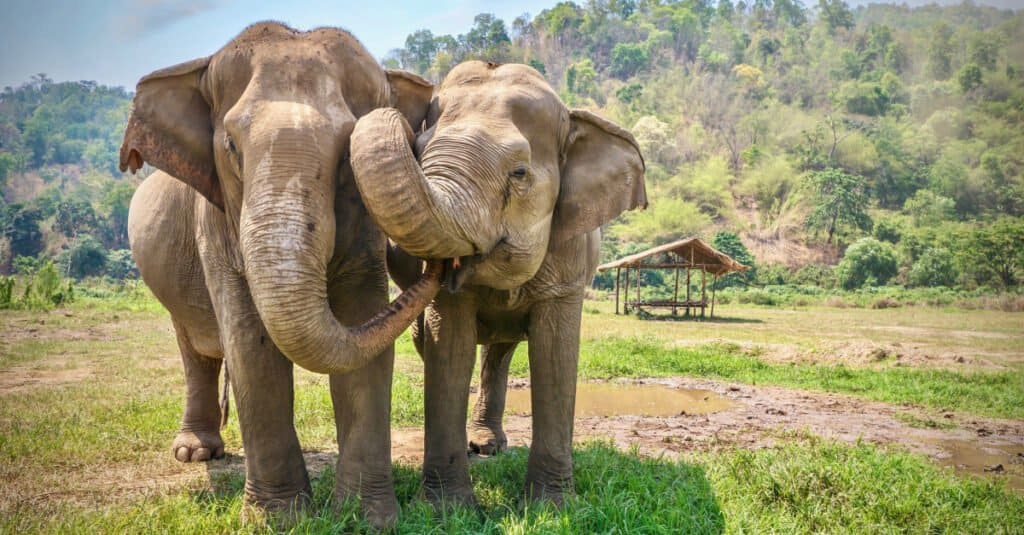
In Vietnam, the Asian
elephant
, which may weigh up to 5,500 kg, is the largest land animal. It can be found in the southern and central Vietnamese woodlands.
©CherylRamalho/Shutterstock.com
Several huge animal species, as well as a wide variety of plants and animals, may be found in Vietnam.
The following list includes some of the biggest animals in Vietnam:
- Asian elephant – The Asian elephant is the largest land animal in Vietnam and can weigh up to 5,500 kg. It is found in the forests of central and southern Vietnam.
- Saltwater crocodile – The saltwater crocodile is the largest crocodile species in the world and can weigh up to 1,000 kg. It is found in the rivers and coastal areas of southern Vietnam.
- Gaur – The gaur, also known as the Indian bison, is the largest wild cattle species in the world and can weigh up to 1,500 kg. It is found in the forests of central and southern Vietnam.
- Water buffalo – The water buffalo is an important domestic animal in Vietnam and can weigh up to 900 kg. It is used for farming and transportation in rural areas.
Where To Find The Top Wildlife in Vietnam

Sun bears are found in Vietnam.
©Vladimir Wrangel/Shutterstock.com
Vietnam has a large number of colorful wildlife species. Some of the more famous native animals and where you can find them are as follows:
- Red-Shanked Douc – these colorful monkeys live high in the Vietnam jungle canopies. You can find them primarily in central Vietnam between Pleiku and Vinh.
- Great Hornbill – the hornbill is an easily recognizable bird with its large size, distinctive bill, and colorful plumage. You can find them flying and perching in the hilly old-growth forests of Vietnam.
- Indian Elephant – Indian elephants are native to Vietnam, but their numbers are few. Many of them are now in reserves and sanctuaries. You can find them in Dak Lak Province.
- Sun Bear – these small bears are also called honey bears because honey is mainly what they eat. They can be found throughout Vietnam, but they are shy and reclusive.
- Vietnamese Mossy Frog – this native frog has green bumpy skin that looks like moss, which makes it hard to spot. It’s mainly found in north Vietnam.
- Asian Water Monitor – this large lizard species can grow to two meters in length. It’s found throughout Vietnam near water sources. Its large size and powerful tail can make it dangerous if provoked.
- Water Buffalo – the water buffalo is the national animal of Vietnam and can be seen in nearly any rural area.
- Burmese Python – this shy, nonvenomous snake is found throughout Vietnam but primarily near water sources. They are often kept as pets.
The Most Dangerous Animals In Vietnam Today

Crocodiles are some of the oldest predators still roaming the earth and have been spotted in Vietnam.
©Alexander Machulskiy/Shutterstock.com
The dangerous animals in Vietnam mainly come in the form of venomous snakes. There are several species of venomous snakes in Vietnam, including the king cobra, many-banded krait, white-lipped pit viper, and the Malayan pit viper.
Of these, the Malayan pit viper and the king cobra are the most aggressive and most likely to stray into human territory.
Vietnam is also home to saltwater crocodiles, which are the largest living reptiles in the world. The specimens found in Vietnam tend to be larger than average. However, the good news is that they are largely extinct in Vietnam. They mainly live in the northern wetlands near China.
Vietnam has a few dangerous insects in the Vietnamese giant centipede and the mosquito. Malaria and dengue fever rates in Vietnam tend to be quite high. The giant centipede is mainly found in jungles, but it’s fairly aggressive and contains neurotoxic venom.
Endangered Animals In Vietnam
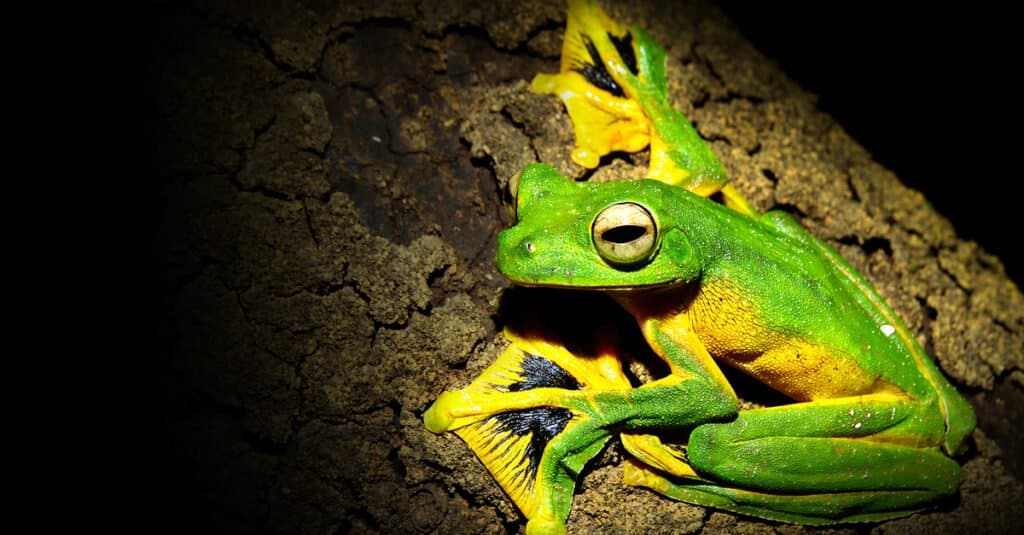
With their unique webbed feet, Wallace’s flying frogs jump between branches. They are also found in Vietnam.
©Binturong-tonoscarpe/Shutterstock.com
There are a number of endangered animals in Vietnam, including famous species like the water buffalo. The following are some other endangered animals in Vietnam:
- Black-crested gibbon
- Indochinese tiger
- Red-shanked douc
- Siamese crocodile
- Vietnam flying frog
- Vietnamese gecko
- Delacour’s langur
- Banded eagle ray
Extinct Wildlife In Vietnam

Rhino horns are prized items in some cultures. They are also found in Vietnam.
©JONATHAN PLEDGER/Shutterstock.com
The Indochinese tiger may be extinct in Vietnam, but scientists aren’t 100% sure. The Javan rhinoceros and Northern Sumatran rhinoceros used to be quite prevalent in Vietnam, but are now extinct.
A number of different bird, snake, and frog species are likely extinct in Vietnam, but actual numbers are unknown.
Native Wildlife To Vietnam
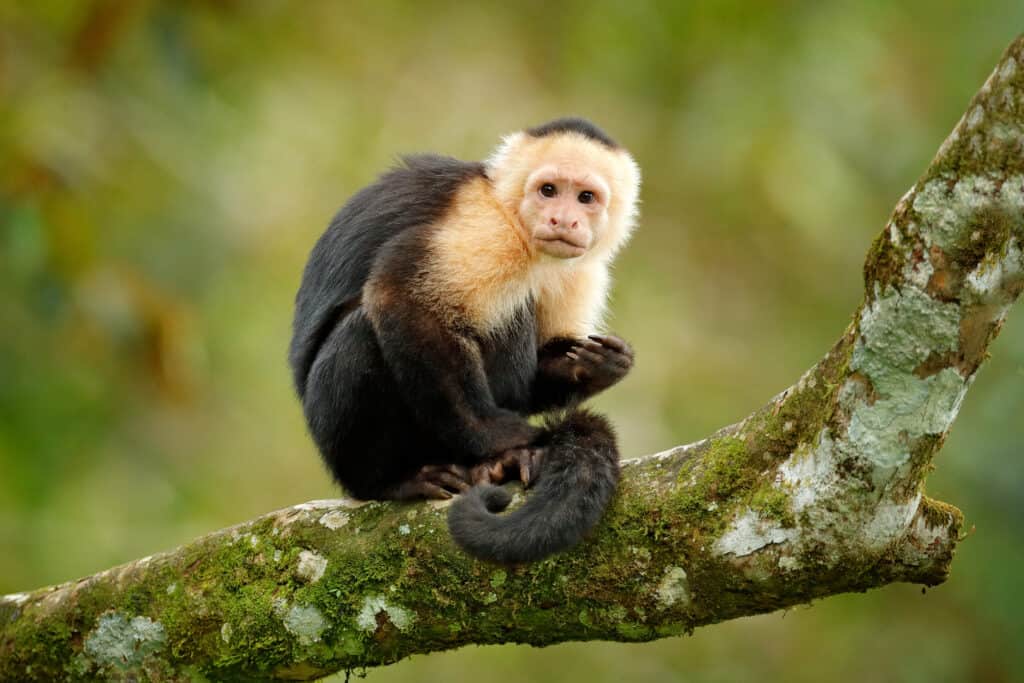
Various monkeys are native to Vietnam, including the lar gibbon and douc monkey species.
©Ondrej Prosicky/Shutterstock.com
Vietnam has roughly 11,217 species of native animals in a generally hot and humid climate. Various monkeys are native to Vietnam, including the lar gibbon and douc monkey species. Vietnam is also home to a large number of reptiles, including venomous and nonvenomous snake species as well as crocodiles and monitors lizards. Vietnamese waters are home to a variety of sea life as well.
Here are a few animals that are native to Vietnam:
- Tigers
- Black bears
- Asian elephants
- Asian wild dogs
- The Giant Munjac
The reticulated python is the largest snake in Vietnam.
Vietnam Flag

The Vietnam flag features a yellow star and red background.
©Tatohra/Shutterstock.com
The flag of Vietnam has transitioned multiple times over the years, due to changing political and religious movements. One flag contains three red stripes, representing the blood of its people throughout the country, in southern, northern, and central Vietnam. The most common flag features a large five-point yellow star with a bright red background.
The flag represents the nation’s fight against French and communist leadership dominance. Despite its stormy past, the country is still united as a nation, as symbolized by the star on its flag.
National Flower of Vietnam

The lotus is not only widespread across the country, but it is also an important part of Vietnam’s culture, often seen adorning buildings, in the country’s art, or on the menu of local restaurants and various tea shops.
©iStock.com/Marina Denisenko
The national flower of Vietnam is the lotus flower (Nelumbo nucifera). The lotus is not only widespread across the country, but it is also an important part of Vietnam’s culture, often seen adorning buildings, in the country’s art, or on the menu of local restaurants and various tea shops.
The lotus flower symbolizes the dignity and resiliency of the Vietnamese people, who resonate with the plant’s ability to grow out of the mud and float on top of the water with beauty and dignity.
Vietnamese Animals

Admiral Butterfly
Stunningly beautiful wings

Ant
First evolved 100 million years ago!

Antelope
Renew their horns every year!

Archerfish
Archerfish can shoot a stream of water up to five feet with amazing accuracy.

Armyworm
They are so named because they "march" in armies of worms from one crop to another in search of food
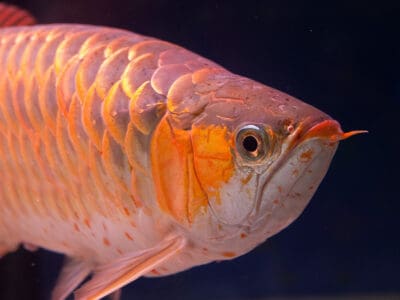
Asian Arowana
The male Asian arowana raises the eggs in its mouth
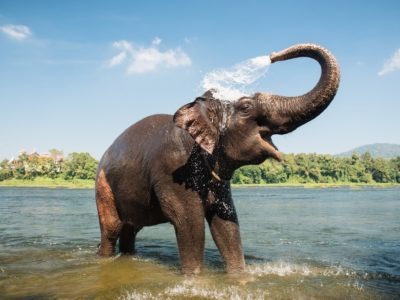
Asian Elephant
Domesticated for hundreds of years!
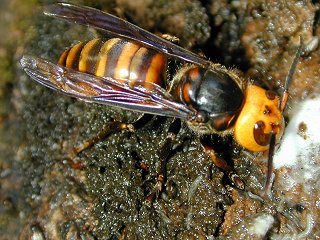
Asian Giant Hornet
The largest wasp in the world!
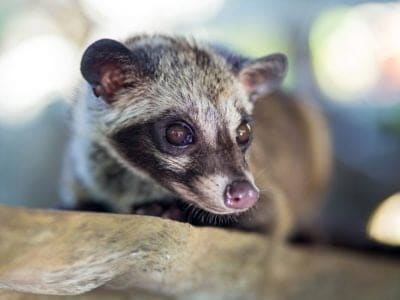
Asian Palm Civet
It mainly eats mangos and coffee!
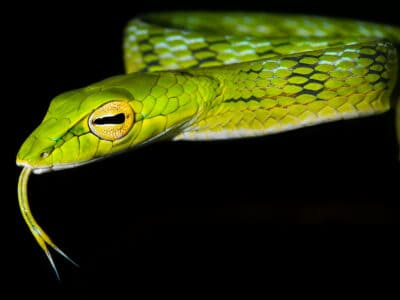
Asian Vine Snake
This snake chews on its victims to release venom.
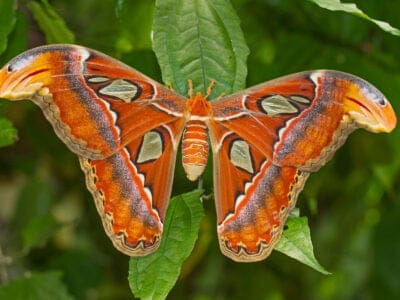
Atlas Moth
Adult atlas moths do not eat - they live off fat they stored as larvae.

Aurochs
Extinct ancestor of all domesticated cattle!

Bamboo Rat
They make a "boop, boop, boop" sound when danger draws near their burrow.

Banana Spider
People spin clothing and fishing nets out of these spiders’ silk.

Banded Krait
What often prevents more people from falling victim is that the banded krait does not always inject venom in a defensive bite. It saves the venom for hunting prey instead.

Barb
There are over 1768 known species!

Barn Owl
Found everywhere around the world!

Barn Swallow
Older offspring help care for new hatchlings.

Bat
Detects prey using echolocation!

Bear
There are 8 different species!
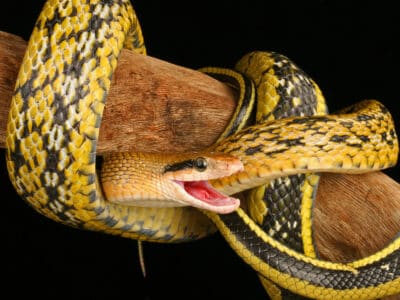
Beauty rat snake
Beauty Rat Snakes are relatively harmless if left undisturbed, only attempting to bite out of fear.

Bed Bugs
Bed bugs feed for 4-12 minutes.

Bee
Rock paintings of bees date back 15,000 years

Beetle
There are more than 350,000 different species
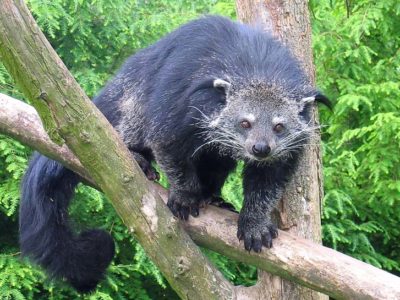
Binturong
Also known as the Asian Bearcat!

Bird
Not all birds are able to fly!

Biscuit Beetle
The biscuit beetle form a symbiotic relationship with yeast

Black Widow Spider
They typically prey on insects!
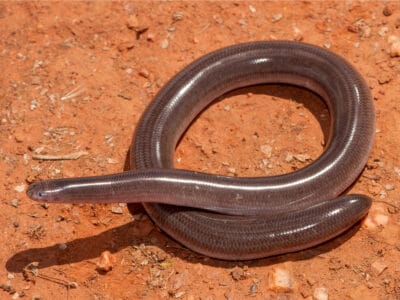
Blind Snake
The blind snake is often mistaken for a worm.

Blue Dragon Sea Slug
They inflict a painful, venomous sting

Box Jellyfish
Venomous marine animals
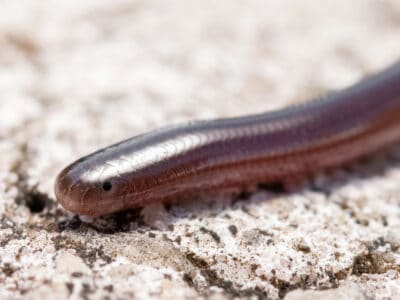
Brahminy Blindsnake
These snakes have been introduced to all continents, except Antarctica!

Brazilian Treehopper
“Mild-Mannered Minimonsters”
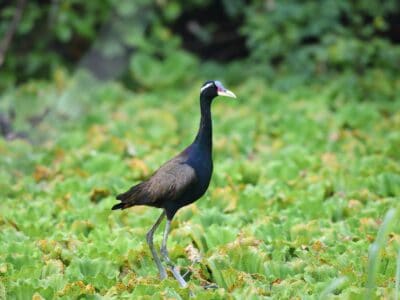
Bronze-winged Jacana
Fathers pick up their young and carry them under their wings

Brown Dog Tick
Can live its entire life indoors

Bumblebee
The most common species of bee!
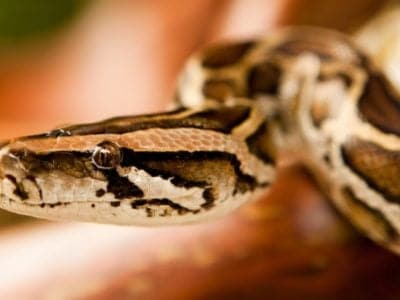
Burmese Python
These snakes can swallow their prey as whole.

Butterfly
There are thought to be up 17,500 species!

Camel Cricket
The camel crickets that are found in the USA are light brown in color. They also have dark streaks all over their body.

Carpenter Ant
Carpenter ants can lift up to seven times their own weight with their teeth!
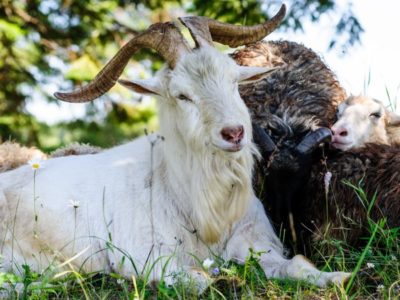
Cashmere Goat
Cashmere goat are named after Kashmir regions of India and Pakistan

Cat
May have been domesticated up to 10,000 years ago.

Caterpillar
The larvae of a moth or butterfly!

Catfish
There are nearly 3,000 different species!

Centipede
There are about 3,000 documented species!

Chicken
First domesticated more than 10,000 years ago!
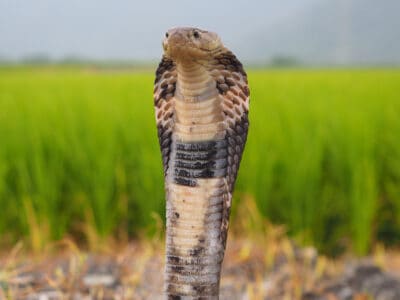
Chinese Cobra
Juvenile Chinese cobras have the ability to start hunting almost from the moment they hatch from the eggs.
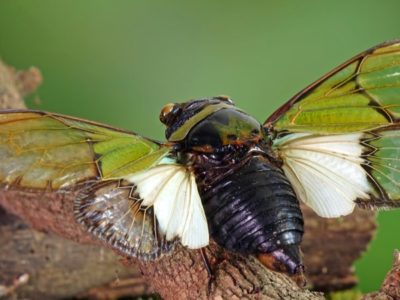
Cicada
Cicadas have one of the longest insect lifespans
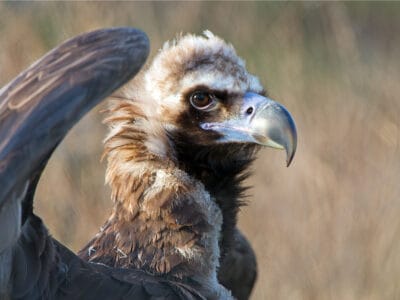
Cinereous Vulture
This vulture can fly at great heights. At least one was found a few thousand feet from the top of Mount Everest.
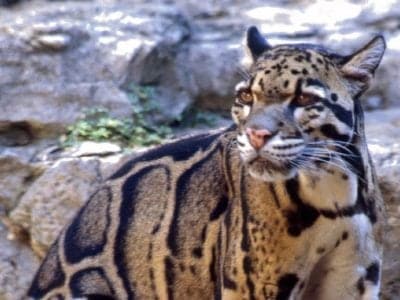
Clouded Leopard
Has canines that can be two inches long!

Cobalt Blue Tarantula
Cobalt blue tarantulas spend most of their time in self-dug burrows and only emerge when it's time to eat

Cockroach
Dated to be around 300 million years old!

Codling Moth
Pupae are able to undergo diapause to survive poor fruit yield years and winter.

Common Buzzard
The most common raptor in the UK!

Common Furniture Beetle
The common furniture beetle feeds exclusively on wood
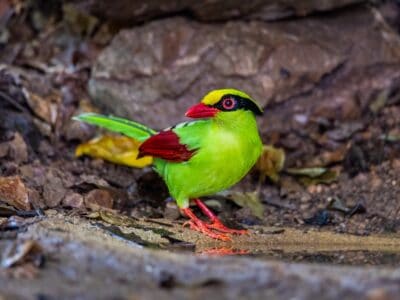
Common Green Magpie
Magpies are aggressive when threatened, often “dive-bombing” at intruders

Common House Spider
House spiders have the ability to eat most insects in a home.

Common Raven
A group of ravens is called an unkindness or a conspiracy.

Coral Snake
There are over 80 species of coral snake worldwide.

Cormorant
They can fly 35 mph and dive 150 feet below water.
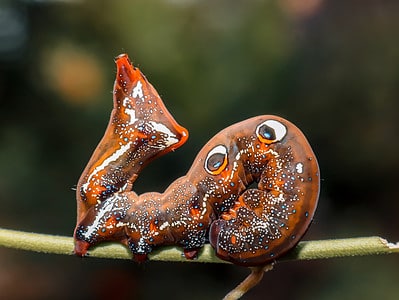
Cosmic Caterpillar
Cosmic caterpillars have spots on their back that look like eyes to scare off predators.

Cow
There are nearly 1.5 billion worldwide!

Cow Reticulated Python
Cow reticulated pythons hatch solid white, then develop spots as they mature.

Crab
There are 93 different crab groups
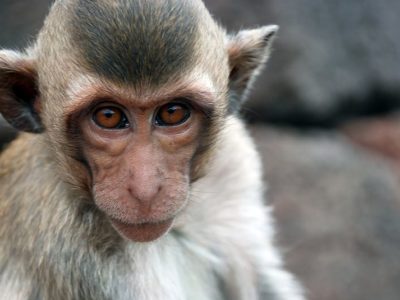
Crab-Eating Macaque
Found throughout the South-East Asian jungles!

Crab Spider
Crab Spiders can mimic ants or bird droppings

Crane
Many are critically endangered species!

Cricket
Male crickets can produce sounds by rubbing their wings together

Crocodile
Have changed little in 200 million years!

Crocodylomorph
Crocodylomorphs include extinct ancient species as well as 26 living species today.

Crow
A group of these birds is called a Murder.

Deer
There are around 40 different species!
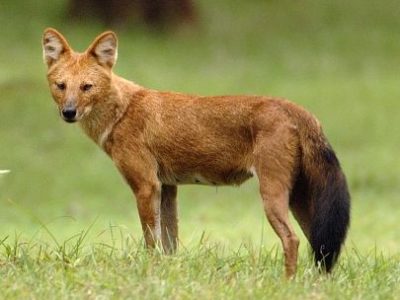
Dhole
Only 2,000 left in the wild!

Dog
First domesticated in South-East Asia!

Dog Tick
Dog ticks feed on dogs and other mammals

Donkey
First domesticated 5,000 years ago!
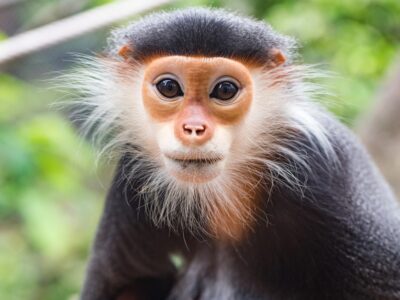
Douc
When these monkeys want to mate, they wiggle their eyebrows.
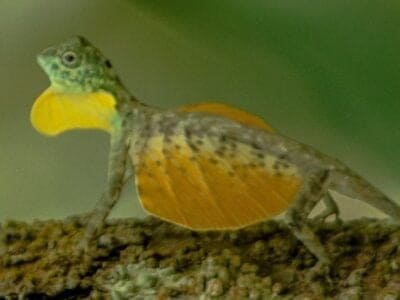
Draco Volans Lizard
Beneath the lizard’s “wings” are a pair of enlarged ribs for support.

Dragonfly
It's larvae are carnivorous!

Duck
Rows of tiny plates line their teeth!

Dung Beetle
The dung beetle can push objects many times its own weight
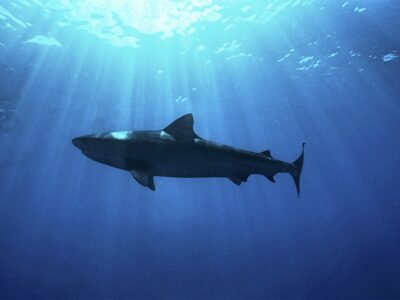
Dusky Shark
The Dusky Shark sometimes eats trash discarded by humans.

Dwarf Gourami
Dwarf gourami can live for over four years with proper care.

Eagle
Has exceptional eyesight!

Earthworm
They are hermaphrodites, which means they have male and female organs

Earwig
There are nearly 2,000 different species!

Eel
Eels can be a mere few inches long to 13 feet!

Elephant
Spends around 22 hours a day eating!

Falcon
The fastest creatures on the planet!

False Widow Spider
False spiders actually prey on black widow spiders and other hazardous spiders
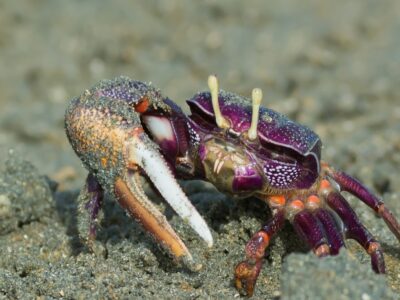
Fiddler Crab
The fiddler crab gets its name from the motion the males make with their over-sized claw during the mating ritual.
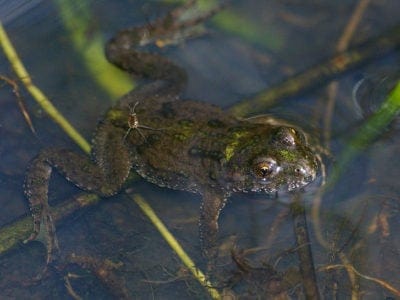
Fire-Bellied Toad
Found across mainland Europe and Asia!
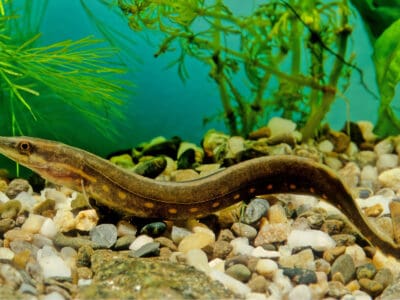
Fire Eel
Fire Eels are not true eels.

Firefly
The firefly produces some of the most efficient light in the world

Flea
Adult fleas can jump up to 7 inches in the air

Fly
There are more than 240,000 different species!

Flying Lemur
The second pair of upper incisors in a flying lemur has a double root, which is unique for mammals.

Flying Squirrel
Can glide up to 90 meters!

Fox
Only 12 species are considered "true foxes"

Frog
There are around 7,000 different species!
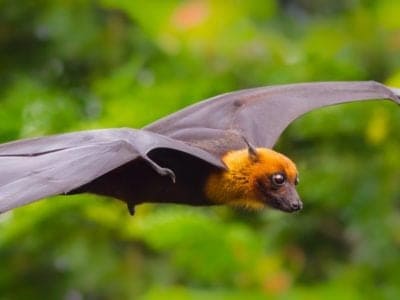
Fruit Bat
Among the largest bats in the world

Fruit Fly
Fruit flies are among the most common research animals in the world

Gazelle
Named for the Arabic word for love poems

Gecko
There are thought to be over 2,000 species!

Gerbil
Originally known as the Desert Rat!

German Cockroach
The most common type of urban roach

Giant Trevally
The largest fish in its genus

Gibbon
Found in dense jungles and tropical forests!

Glass Lizard
Can grow up to 4ft long!

Glowworm
Found inhabiting dense woodland and caves!

Gnat
Males form large mating swarms at dusk

Goat
Most closely related to the Sheep!

Golden Oriole
Migrates between Europe and Asia!

Goose
There are 29 different species!
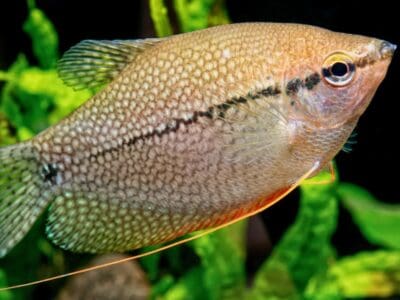
Gourami
Gourami fishes show parental care for their young
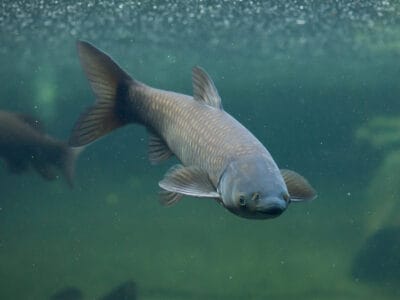
Grass Carp
The grass carp is considered to be a natural weed control agent.

Grasshopper
There are 11,000 known species!

Green Bee-Eater
Mainly eats honeybees!
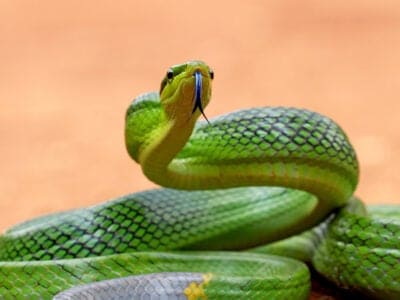
Green Rat Snake
The green rat snake catches its meals in midair!

Gypsy Moth
One of the most invasive species in the world

Hamster
Able to run as quickly backwards as forwards!

Hare
Can reach speeds of over 50 mph!

Hawk Moth Caterpillar
Many hawk moth caterpillars eat toxins from plants, but don’t sequester them the way milkweed butterflies do. Most toxins are excreted.

Hedgehog
Thought to be one of the oldest mammals on Earth!

Heron
Inhabits wetlands around the world!
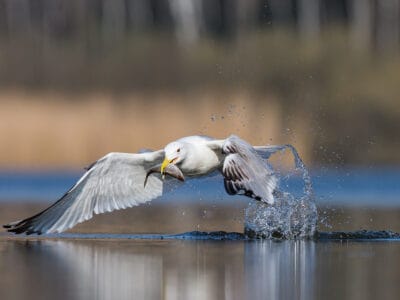
Herring Gull
They are loud, spirited birds with raucous cries that sound like bursts of laughter.

Honey Bee
There are only 8 recognized species!

Hoopoe
Stunning bird with a stinky way to deter predators!

Horse
Has evolved over 50 million years!

Horsefly
Horseflies have been seen performing Immelmann turns, much like fighter jets.

Horseshoe Crab
Changed little in over 500 million years!

Housefly
The fly has no teeth

Human
Thought to have orignated 200,000 years ago!

Huntsman Spider
Some huntsman spiders have an interesting way of moving around. Some cartwheel while others do handsprings or backflips.

Ibis
Found in swamps, marshes and wetlands!

Indian Elephant
Found throughout south-east Asia!
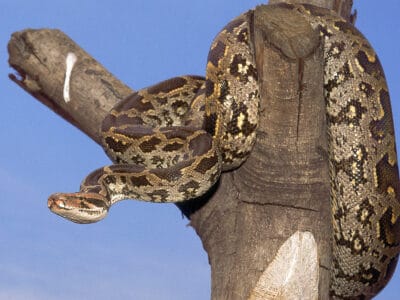
Indian python
Kaa from Rudyard Kipling's The Jungle Book was an Indian Python.
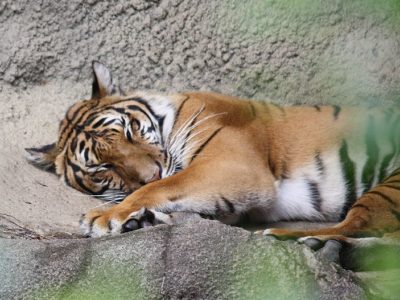
Indochinese Tiger
Now thought to be extinct in China!

Insects
There are an estimated 30 million species!
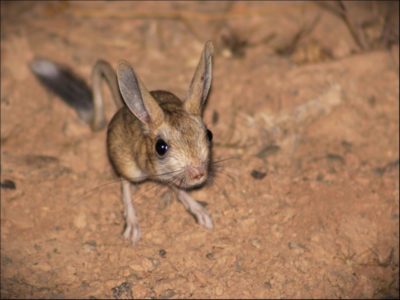
Jerboa
Tiny rodent with a kangaroo-like jump!

Jumping Spider
Some can jump 50 times the length of their bodies
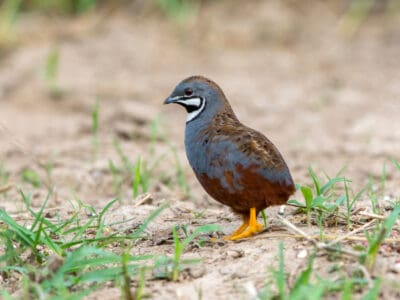
King Quail
Females look similar to males but don’t come in shades of blue
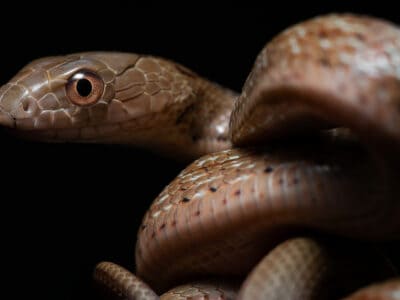
King Rat Snake
When threatened or frightened, the king rat snake has the ability to produce a foul-smelling substance out of self defense.

Kingfisher
Inhabits wetlands and woodlands worldwide!

Kissing Gourami
The kissing gesture that the kissing gourami displays is not a mating gesture
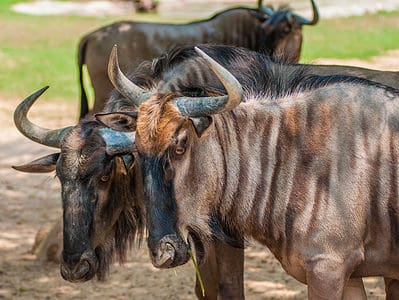
Kouprey
The kouprey is one of the rarest mammals in the world

Ladybug
There are more than 5,000 species worldwide!

Leech
Has 10 pairs of eyes!

Leopard Cat
There are 11 different species!

Liger
The offspring of a lion and tiger parents!

Lizard
There are around 5,000 different species!
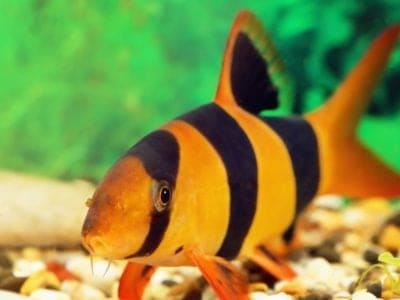
Loach
Have sharp spines below their eyes

Locust
Each locust can eat its weight in plants each day.

Long-Eared Owl
Ear tufts make it look bigger!
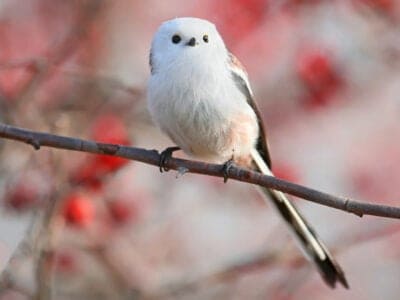
Long-Tailed Tit
Often hangs upside down while feeding!
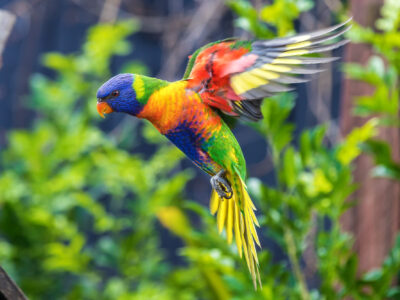
Lorikeet
The lorikeet has a long brush-like tongue with fine hairs on it

Loris
Like all lorises, slow loris has a cute wide-eyed look, but it also has a venomous sting that can rot human flesh.

Magpie
They are found across Europe, Asia and Africa!
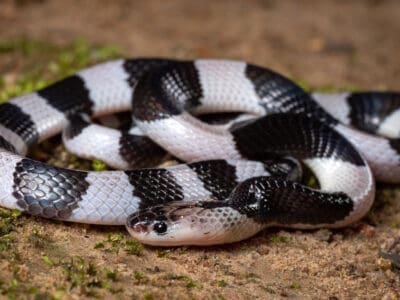
Malayan Krait
It's called the five-step snake because if a person is bitten, they can walk about five steps before dying.
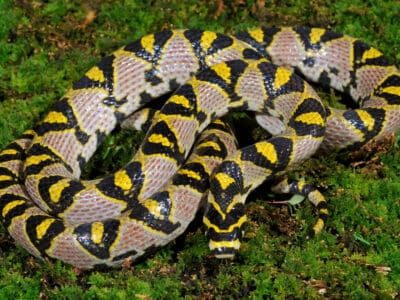
Mandarin Rat Snake
"This docile snake is a popular and long-lived pet - though challenging to care for - with a lifespan of up to 21 years!"

Mangrove Snake
Mangrove snakes have small fangs that are more like enlarged teeth at the back of their jaw.

Masked Palm Civet
Found throughout Asia, India and China!

Mayfly
There are 2,500 known species worldwide!

Mealybug
They have a symbiotic relationship with ants.
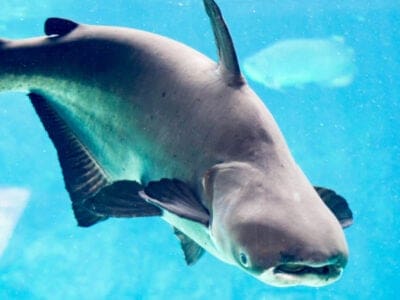
Mekong Giant Catfish
The Mekong giant catfish is the largest purely freshwater fish in the world

Milkfish
Females lay up to 5 million eggs at one time in warm, shallow and salty waters

Millipede
Some species have a poisonous bite!

Mole
Primarily hunts and feeds on Earthworms!

Mole Cricket
Adult Mole crickets may fly as far as 5 miles during mating season and are active most of the year.
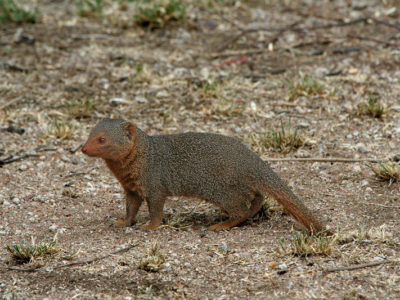
Mongoose
Range in size from just 1 to 3 foot!

Mongrel
Has characteristics of two or more breeds!

Monitor Lizard
Some species are thought to carry a weak venom!

Monkey
There are around 260 known species!
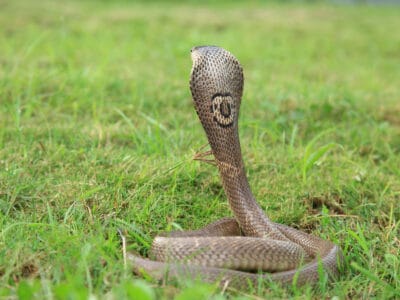
Monocled Cobra
The monocled cobra is responsible for the highest fatality rate of any snake in all of Thailand.

Moorhen
Feeds on aquatic insects and water-spiders!

Mosquito
Only the female mosquito actually sucks blood

Moth
There are 250,000 different species!

Mouse
Found on every continent on Earth!

Mule
The offspring of a horse and donkey parents!

Muntjac
The muntjac is the smallest type of deer in the world
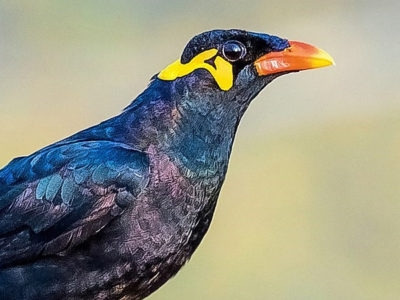
Myna Bird
Many people believe the hill myna bird is better at mimicking humans than a parrot!

Neanderthal
Roamed Asia and Europe for around 100,000 years!

Nematode
Nematodes range in size from 1/10 of an inch to 28 feet long

Newt
Able to regrow lost or damaged limbs!
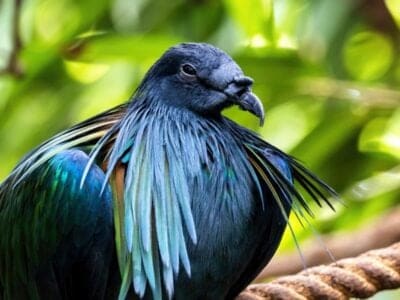
Nicobar pigeon
Unlike other pigeons, Nicobar pigeons don't fly in haphazard flocks but in columns or single file.

Nightingale
Named more than 1,000 years ago!

No See Ums
There are more than 5,000 species.

Oranda Goldfish
Oranda goldfish are one of the most popular fancy goldfish breeds

Orb Weaver
Females are about four times the size of males

Osprey
They reuse nesting sites for 70 years!

Otter
There are 13 different species worldwide

Owl
The owl can rotate its head some 270 degrees
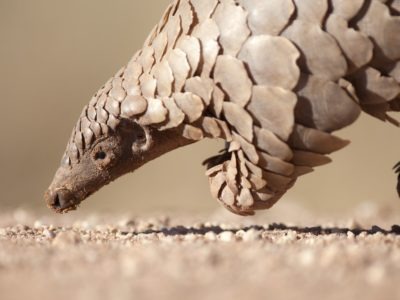
Pangolin
Bad eyesight, but great sense of smell
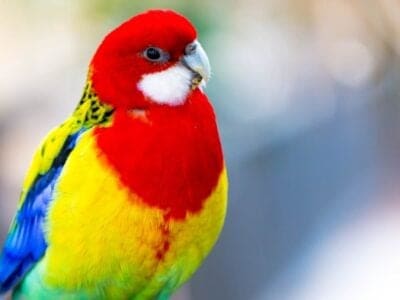
Parakeet
Monk parakeets are the only parakeets that actually build nests. They’re also the only parakeets to nest in great colonies.

Parrot
Can live for up to 100 years!
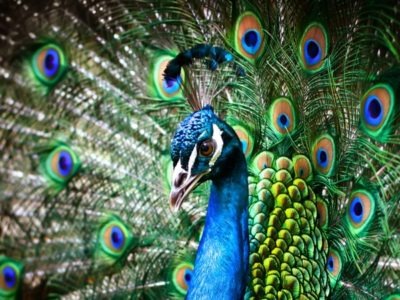
Peacock
Most commonly found on the Indian mainland!

Peregrine Falcon
Fastest animal on Earth

Pheasant
Females lay between 8 and 12 eggs per clutch!

Pheasant-tailed Jacana
The pheasant-tailed jacana is the only species in its family that migrates long distances.

Pig
Thought to have been domesticated in 9,000 BC!

Pigeon
They can find their way back to their nests from up to 1300 miles away.

Pika
Found in mountainous regions and rocky areas
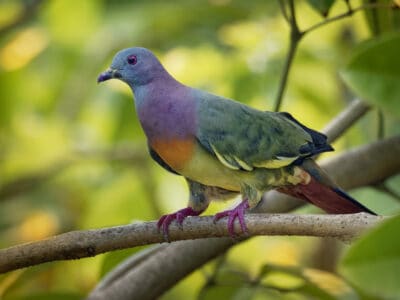
Pink-Necked Green Pigeon
They make whistling and quacking noises

Pipe Snake
Some of these snakes flatten their neck and raise their heads to imitate cobras if they’re threatened.
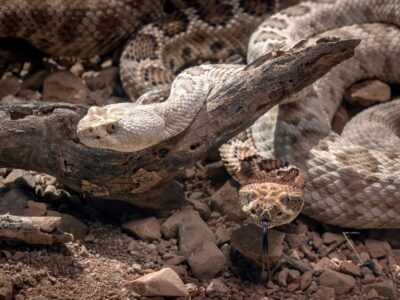
Pit Viper
Pit vipers's fangs fold up into their mouths when they don't need them.

Platinum Arowana
The male broods the eggs and baby fish in his mouth.

Pompano Fish
They are bottom-feeders

Pond Skater
There are 500 different species!

Porcupine
There are 30 different species worldwide!

Praying Mantis
The mantis can turn its head 180 degrees.

Quail
Inhabits woodland and forest areas worldwide!

Rabbit
There are more than 300 different species!

Rat
Omnivores that eat anything!

Rat Snakes
Rat snakes are constrictors from the Colubridae family of snakes.
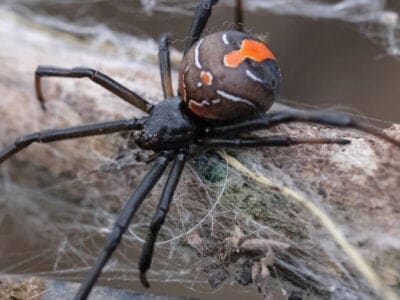
Redback Spider
The redback spiders found in New Caledonia differ from other populations in that they don’t practice sexual cannibalism and don’t bite people as much.
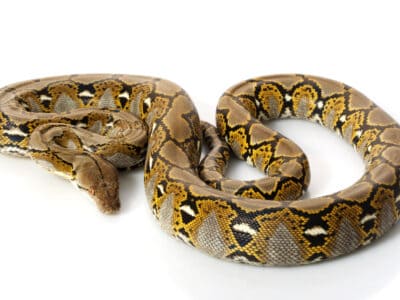
Reticulated python
These popular pets can get big enough to kill their owner.

Rhesus Macaque
Rhesus Macaques are the most widely distributed primate in terms of geographic diversity

Rhinoceros
It's horns are made from keratin!

River Turtle
Inhabits freshwater habitats around the world!

Robin
There are more than 45 species in Australia alone!

Rodents
The capybara, the world’s largest rodent, likes to be in and around bodies of water. Because of this, the Catholic Church in South America decided that it was a fish, and people were allowed to eat it during Lent and First Fridays.

Rooster
Will mate with the entire flock!

Sable Ferret
Ferrets were used during the Revolutionary War to keep down the rat population.

Salamander
There are more than 700 different species!
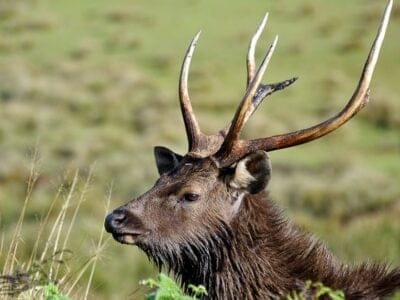
Sambar
Male sambars will compete for mates by clashing together with their antlers

Sand Crab
The sand crab burrows beneath the sand with its tail

Saola
Only known to science since 1992!
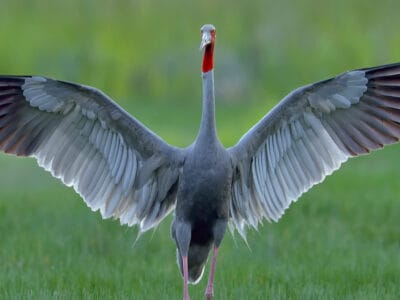
Sarus Crane
Parents use low calls to tell their chicks to freeze and lie still when danger lurks.

Scorpion
There are around 2,000 known species!

Sea Eagle
The sea eagle tends to mate for life with a single partner

Seahorse
Males give birth to up to 1,000 offspring!

Sheep
Around 35 million in the English countryside!

Short-Eared Owl
The short-eared owl is one of the most widespread owl species in the world, covering five continents.

Shrew
The spinal column of the shrew Scutisorex somereni is so strong and reinforced that it can support the weight of an adult human.

Shrimp
There are 2,000 different species worldwide!

Betta Fish (Siamese Fighting Fish)
Can live in low-oxygen environments!

Skink Lizard
Some skinks lay eggs in some habitats while giving birth to skinklets in other habitats.

Slow Worm
Found widely throughout British gardens!

Slug
They glide around on one foot, which is aided by the slime they produce

Smallmouth Bass
A fierce fighter!

Smokybrown Cockroach
Has up to 45 eggs per egg case

Snail
There are nearly 1,000 different species!

Snake
There are around 4,000 known species worldwide

Sparrow
There are 140 different species!

Spider Wasp
They prey on spiders to feed their larvae or they parasitize other spider wasps.
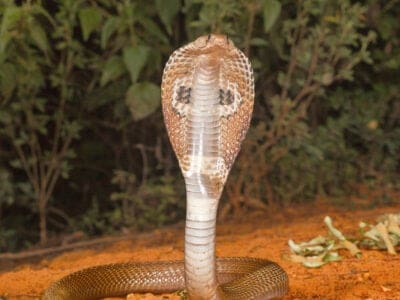
Spitting Cobra
Spitting cobras are types of cobras that can spit venom at predators and prey.
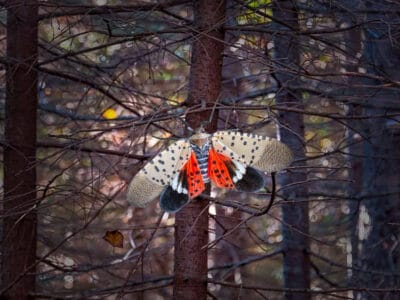
Spotted Lanternfly
The spotted lanternfly is often confused for a moth, but it’s actually a type of planthopper

Squirrel
Small rodents found in woodlands worldwide!

Stick Insect
There are more than 3,000 different species!

Stoat
Average adults weigh about 200 grams!

Stork
They can’t sing like other birds.

Sun Bear
The smallest species of bear in the world!

Sunbeam Snake
Sunbeam snakes have two lungs instead of just a single lung like most snake species.
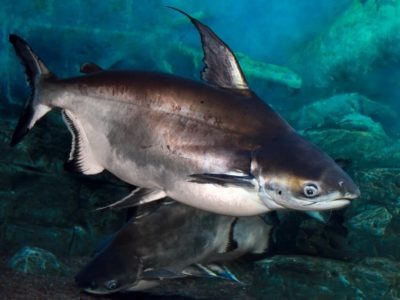
Swai Fish
The edges of an iridescent shark's fins have a signature glow

Swan
Populations have been affected by pollution!

Tapir
Most closely related to horses and rhinos!

Tarantula Hawk
Tarantula hawks are excellent pollinators, especially for milkweed.

Tentacled Snake
Their tentacles have nerves that attach directly into the area of the brain that processes visual information.

Termite
Their mounds can be up to 9 meters tall!

Thrush
The American robin is called the robin because its red breast reminded European settlers of the robin back in the old country.

Tick
They inject hosts with a chemical that stops them from feeling the pain of the bite
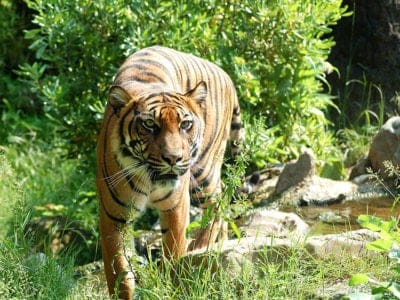
Tiger
The largest feline in the world!

Tiger Beetle
The adult tiger beetle is one of the fastest land insects in the world

Tire Track Eel
They like to burrow into aquarium sand.

Tokay Gecko
The Tokay gecko gets its onomatopoeic name from its "To-kay!" barking call.

Tortoise
Can live until they are more than 150 years old!

Tree Cricket
They make music with their wings

Tree Frog
Found in warmer jungles and forests!
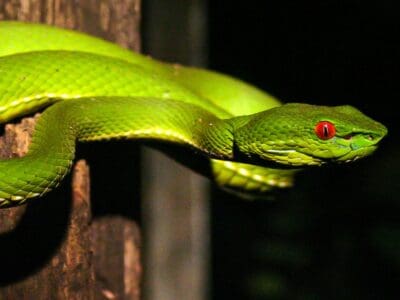
Tree Viper (Bamboo Viper)
Pit vipers can strike accurately at moving objects less than .5 degrees Farenheit warmer than the background.

Turtles
Some species of aquatic turtles can get up to 70 percent of their oxygen through their butt.
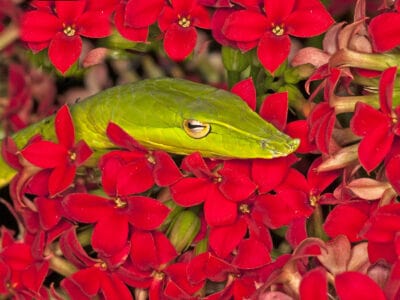
Vine Snake
A slender body and elongated snout give the vine snake a regal look.

Vinegaroon
Vinegaroons can spray 19 times before the glands are depleted

Viper
Vipers are one of the most widespread groups of snakes and inhabit most

Vulture
There are 30 different species worldwide!

Wasp
There are around 75,000 recognised species!

Water Buffalo
Has been domesticated for thousands of years!
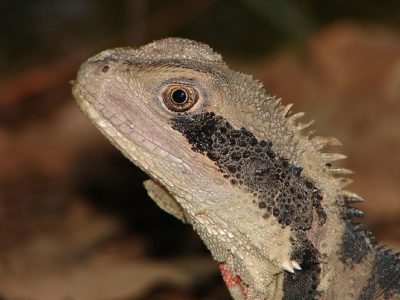
Water Dragon
Spends most of it's time in the trees!

Weasel
The smallest carnivorous mammal in the world!

White Ferret / Albino Ferrets
There are two different types of white ferrets!

White Tiger
None have been seen in the wild for 50 years!
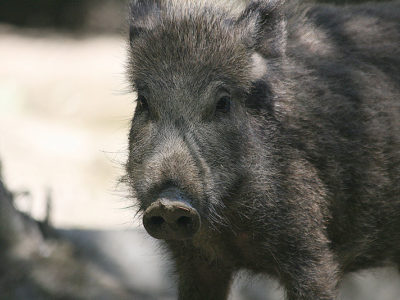
Wild Boar
Males have a top tusk to sharpen the bottom one!

Wolf
Thought to date back more than 300,000 years!

Wolf Spider
Carnivorous arachnid that hunts its prey.
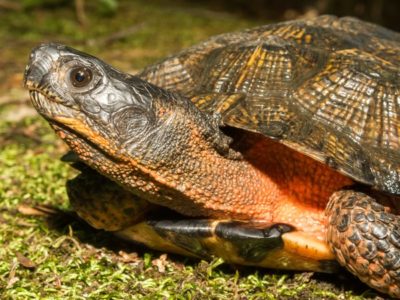
Wood Turtle
Temperature determines the sex of turtle eggs

Woodlouse
This animal can roll up into a ball

Woodlouse Spider
Unlike most spiders, woodlouse spiders don’t build a web.

Woodpecker
There are 200 different species!

Worm
Doesn’t have eyes.

Wryneck
They feign death by making their bodies limp and closing their eyes.

Yellow Crazy Ant
One of the top 100 worst invasive species!
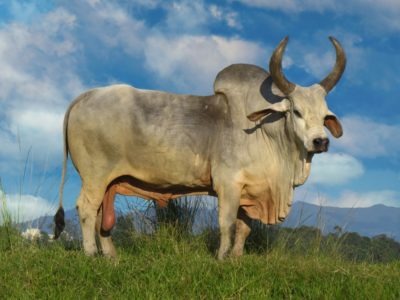
Zebu
There are around 75 different species!
Vietnamese Animals List
- Admiral Butterfly
- Ant
- Antelope
- Archerfish
- Armyworm
- Asian Arowana
- Asian Elephant
- Asian Giant Hornet
- Asian Palm Civet
- Asian Vine Snake
- Atlas Moth
- Aurochs
- Bamboo Rat
- Banana Spider
- Banded Krait
- Barb
- Barn Owl
- Barn Swallow
- Bat
- Bear
- Beauty rat snake
- Bed Bugs
- Bee
- Beetle
- Binturong
- Bird
- Biscuit Beetle
- Black Widow Spider
- Blind Snake
- Blue Dragon Sea Slug
- Box Jellyfish
- Brahminy Blindsnake
- Brazilian Treehopper
- Bronze-winged Jacana
- Brown Dog Tick
- Bumblebee
- Burmese Python
- Butterfly
- Camel Cricket
- Carpenter Ant
- Cashmere Goat
- Cat
- Caterpillar
- Catfish
- Centipede
- Chicken
- Chinese Cobra
- Cicada
- Cinereous Vulture
- Clouded Leopard
- Cobalt Blue Tarantula
- Cockroach
- Codling Moth
- Common Buzzard
- Common Furniture Beetle
- Common Green Magpie
- Common House Spider
- Common Raven
- Coral Snake
- Cormorant
- Cosmic Caterpillar
- Cow
- Cow Reticulated Python
- Crab
- Crab-Eating Macaque
- Crab Spider
- Crane
- Cricket
- Crocodile
- Crocodylomorph
- Crow
- Cuckoo
- Deer
- Dhole
- Dog
- Dog Tick
- Donkey
- Dormouse
- Douc
- Draco Volans Lizard
- Dragonfly
- Duck
- Dung Beetle
- Dusky Shark
- Dwarf Gourami
- Eagle
- Earthworm
- Earwig
- Eel
- Elephant
- Falcon
- False Widow Spider
- Fiddler Crab
- Fire-Bellied Toad
- Fire Eel
- Firefly
- Flea
- Fly
- Flying Lemur
- Flying Squirrel
- Fox
- Frog
- Fruit Bat
- Fruit Fly
- Gazelle
- Gecko
- Gerbil
- German Cockroach
- Giant Trevally
- Gibbon
- Glass Lizard
- Glowworm
- Gnat
- Goat
- Golden Oriole
- Goose
- Gourami
- Grass Carp
- Grasshopper
- Green Bee-Eater
- Green Rat Snake
- Gypsy Moth
- Hamster
- Hare
- Hawk Moth Caterpillar
- Hedgehog
- Heron
- Herring Gull
- Honey Bee
- Hoopoe
- Horse
- Horsefly
- Horseshoe Crab
- Housefly
- Human
- Huntsman Spider
- Ibis
- Indian Elephant
- Indian python
- Indochinese Tiger
- Insects
- Jerboa
- Jumping Spider
- King Quail
- King Rat Snake
- Kingfisher
- Kissing Gourami
- Kouprey
- Ladybug
- Leech
- Leopard Cat
- Liger
- Lizard
- Loach
- Locust
- Long-Eared Owl
- Long-Tailed Tit
- Lorikeet
- Loris
- Magpie
- Malayan Krait
- Mandarin Rat Snake
- Mangrove Snake
- Masked Palm Civet
- Mayfly
- Mealybug
- Mekong Giant Catfish
- Milkfish
- Millipede
- Mole
- Mole Cricket
- Mongoose
- Mongrel
- Monitor Lizard
- Monkey
- Monocled Cobra
- Moorhen
- Mosquito
- Moth
- Mourning Gecko
- Mouse
- Mule
- Muntjac
- Myna Bird
- Neanderthal
- Nematode
- Newt
- Nicobar pigeon
- Nightingale
- No See Ums
- Oranda Goldfish
- Orb Weaver
- Osprey
- Otter
- Owl
- Ox
- Pangolin
- Parakeet
- Parrot
- Peacock
- Peregrine Falcon
- Pheasant
- Pheasant-tailed Jacana
- Pig
- Pigeon
- Pika
- Pink-Necked Green Pigeon
- Pipe Snake
- Pit Viper
- Platinum Arowana
- Pompano Fish
- Pond Skater
- Porcupine
- Praying Mantis
- Quail
- Rabbit
- Rat
- Rat Snakes
- Redback Spider
- Reticulated python
- Rhesus Macaque
- Rhinoceros
- River Turtle
- Robin
- Rodents
- Rooster
- Sable Ferret
- Salamander
- Sambar
- Sand Crab
- Saola
- Sarus Crane
- Scorpion
- Sea Eagle
- Seahorse
- Sheep
- Short-Eared Owl
- Shrew
- Shrimp
- Betta Fish (Siamese Fighting Fish)
- Skink Lizard
- Slow Worm
- Slug
- Smallmouth Bass
- Smokybrown Cockroach
- Snail
- Snake
- Sparrow
- Spider Wasp
- Spitting Cobra
- Spotted Lanternfly
- Squirrel
- Stick Insect
- Stoat
- Stork
- Sun Bear
- Sunbeam Snake
- Swai Fish
- Swallowtail Butterfly
- Swan
- Tapir
- Tarantula Hawk
- Tentacled Snake
- Termite
- Thrush
- Tick
- Tiger
- Tiger Beetle
- Tire Track Eel
- Tokay Gecko
- Tortoise
- Tree Cricket
- Tree Frog
- Tree Viper (Bamboo Viper)
- Turtles
- Vine Snake
- Vinegaroon
- Viper
- Vulture
- Wasp
- Water Buffalo
- Water Dragon
- Weasel
- White Ferret / Albino Ferrets
- White Tiger
- Wild Boar
- Wolf
- Wolf Spider
- Wood Turtle
- Woodlouse
- Woodlouse Spider
- Woodpecker
- Worm
- Wryneck
- Yellow Crazy Ant
- Zebu
Animals in Vietnam FAQs (Frequently Asked Questions)
What dangerous animals live in Vietnam?
Vietnam is home to several venomous snake species as well as saltwater crocodiles, disease-carrying mosquitos, and giant centipedes.
What animal represents Vietnam?
The national animal is the water buffalo.
Are there tigers in Vietnam?
Tigers are largely considered to be extinct in Vietnam. Some may still live in evergreen forests in Central and North Vietnam.






